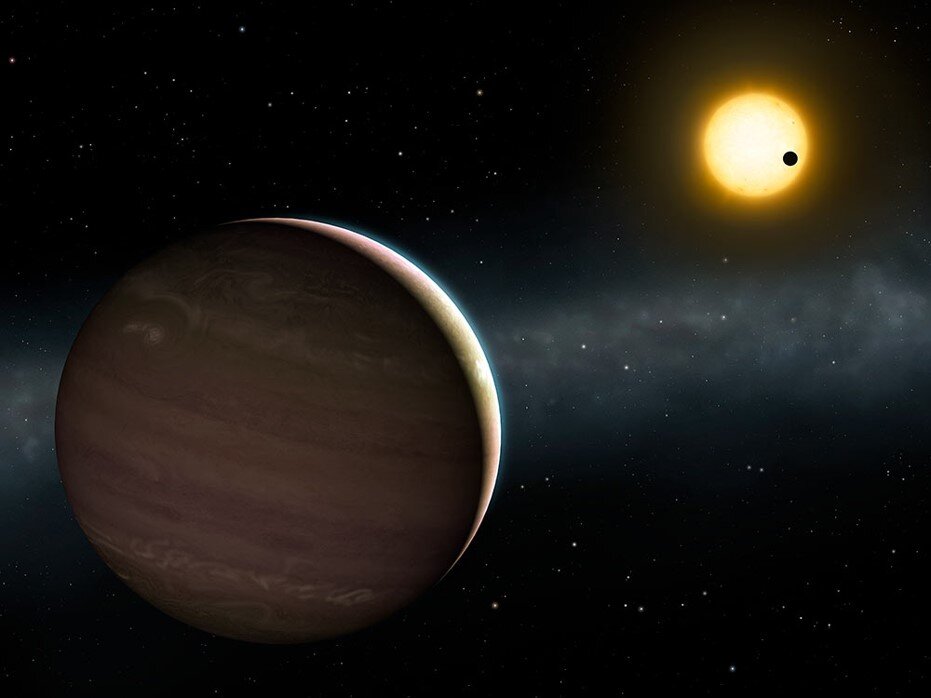

Artistic view of the strongly interactive exoplanet system WASP-148. The planet WASP-148c is shown in front. On the back, the planet WASP-148b can be seen in transit by the host star around which the two planets are in orbit. Credit: Paris Institute of Astrophysics, Mark A. Garlick
Several interactive exoplanets have already been seen by satellites. But a new breakthrough has been achieved with, for the first time, direct detection from the ground of such an extrasolar system.
An international collaboration involving CNRS researchers has discovered an unusual planetary system, called WASP-148, using the French instrument SOPHIE at the Observatoire de Haute-Provence (CNRS / Aix-Marseille Université). Scientists analyzed the star’s motion and concluded that it was home to two planets, WASP-148b and WASP-148c. Observations showed that the two planets were interacting strongly, which was confirmed from other data.
While the first planet, WASP-148b, orbits its star in nearly nine days, the second, WASP-148c, takes four times as long. This relationship between the orbital periods implies that the WASP-148 system is close to resonance, which means that there is an improved gravitational interaction between the two planets. And it turns out that astronomers detected variations in the orbital periods of the planets. While a single planet, without influence from another, would move with a constant period, WASP-148b and WASP-148c experience acceleration and deceleration that provides evidence of their interaction.
Their study will be published shortly in the journal. Astronomy and astrophysics.

Measurements (in red) of the radial velocity of the WASP-148 planetary system with the SOPHIE spectroscope at the Observatoire de Haute-Provence. The data shows variations in the radial velocity of the star caused by the planets WASP-148b (left) and WASP-148c (right). The black curves show the theoretical model that best fits the measurement points. Credit: G. Hébrard et al.
Astronomers see unexpected molecule in exoplanet atmosphere
G. Hebrard et al. Discovery and characterization of exoplanets WASP-148b and c. A transit system with two giant planets interacting, Astronomy and astrophysics (2020). DOI: 10.1051 / 0004-6361 / 202038296
Discovery and characterization of exoplanets WASP-148b and c. A transit system with two giant planets interacting. arXiv: 2004.14645 [astro-ph.EP]. arxiv.org/abs/2004.14645
Citation: Unprecedented ground discovery of two strongly interacting exoplanets (2020, July 2) retrieved on July 3, 2020 from https://phys.org/news/2020-07-unprecedented-ground-based-discovery-strongly -interacting.html
This document is subject to copyright. Other than fair dealing for private study or research purposes, no part may be reproduced without written permission. The content is provided for informational purposes only.